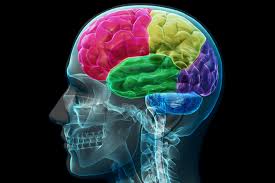Lesson 3 - Stereotypes, Labels, Sample Size, and Side Effects
The Brain
 Time Magazine (Canada, 2004) featured an article that exemplified the advantages and disadvantages of pharmaceutical-based treatment for children with abnormal behaviours. One of the individuals interviewed in the article, Jessi, speaks of the differences in her personality when she is taking her medication and when she is not taking her medication. This type of side effect, a marked difference in personality, is called emotional liability. Her story begins with a diagnosis of attention deficit hyperactive disorder (ADHD) in kindergarten. Being sent to the “time-out-chair” many times a day was the result of her inability to foresee the consequences of her actions. The first drug she tried took away her appetite completely; eventually, the doctors had to switch medications. While it is now working well, to find the proper dosage with the second drug took a long time . With this medication, Jessi is able to concentrate in school, but without it, she cannot focus on school work. While taking her medication, she is very shy and does not say much or participate in conversations. When off her medication, she is outgoing, spontaneous, and talkative. Having this emotional liability as a side effect sometimes depresses Jessi, but the alternative, the inability to focus, is worse.
Time Magazine (Canada, 2004) featured an article that exemplified the advantages and disadvantages of pharmaceutical-based treatment for children with abnormal behaviours. One of the individuals interviewed in the article, Jessi, speaks of the differences in her personality when she is taking her medication and when she is not taking her medication. This type of side effect, a marked difference in personality, is called emotional liability. Her story begins with a diagnosis of attention deficit hyperactive disorder (ADHD) in kindergarten. Being sent to the “time-out-chair” many times a day was the result of her inability to foresee the consequences of her actions. The first drug she tried took away her appetite completely; eventually, the doctors had to switch medications. While it is now working well, to find the proper dosage with the second drug took a long time . With this medication, Jessi is able to concentrate in school, but without it, she cannot focus on school work. While taking her medication, she is very shy and does not say much or participate in conversations. When off her medication, she is outgoing, spontaneous, and talkative. Having this emotional liability as a side effect sometimes depresses Jessi, but the alternative, the inability to focus, is worse.
The brain is the most complex organ in the human body. The structural and chemical composition of this organ is astounding. Formed and molded from interactions among our genes, life experiences, and environment, the brain receives, co-ordinates, and distributes information to orchestrate how we think, feel, learn, and behave. To perform these functions, the brain must effectively communicate with all its cells. Failure to do so may cause or contribute to brain dysfunction and mental illness.
Watch the video below on the teenage brain.
Please refer to the diagrams of the brain below, which shows the areas of the brain believed to be responsible for various afflictions. The table below explains the role that each part of the brain plays.
| Parts and Functions of the Brain | |
| Frontal Lobe | This part of the brain organizes, plans, and controls movement. Problems in this area may be linked to depression, ADHD, and obsessive-compulsive disorder (OCD). |
| Basal Ganglia | Within the limbic system, the basal ganglia control anxiety levels and co-ordinate motor behaviour. Difficulties in this area may be linked to panic, anxiety, OCD, depression, and bi-polarity. Also part of the limbic system is the putamen area. This area is linked to ADHD. |
| Hippocampus | This area is essential to the formation of memories and higher learning. Problems in this area may be linked to depression, anxiety, panic, and bi-polarity. |
| Amygdala | (Not labelled) This structure is the focal area for fear and emotion. Difficulties with this area may be linked to depression, anxiety, panic, and post-traumatic stress. |
| Prefrontal Cortex | (Not labelled) Responsible for the regulation of attention span and impulse control, this area is also important in problem solving, critical thinking, and the ability to empathize. Damage to this area may be linked to ADHD, OCD, anxiety, and bi-polarity. |
| Thalamus | This area can be considered the “dispatch station” for incoming sensory information. If the thalamus is not functioning properly, OCD symptoms may arise. |
| Cingulate Gyrus | (Not labelled) Cognitive flexibility, adaptability, and co-operation are some of the tasks for which this area is responsible. OCD is linked to damage in the cingulate gyrus. |